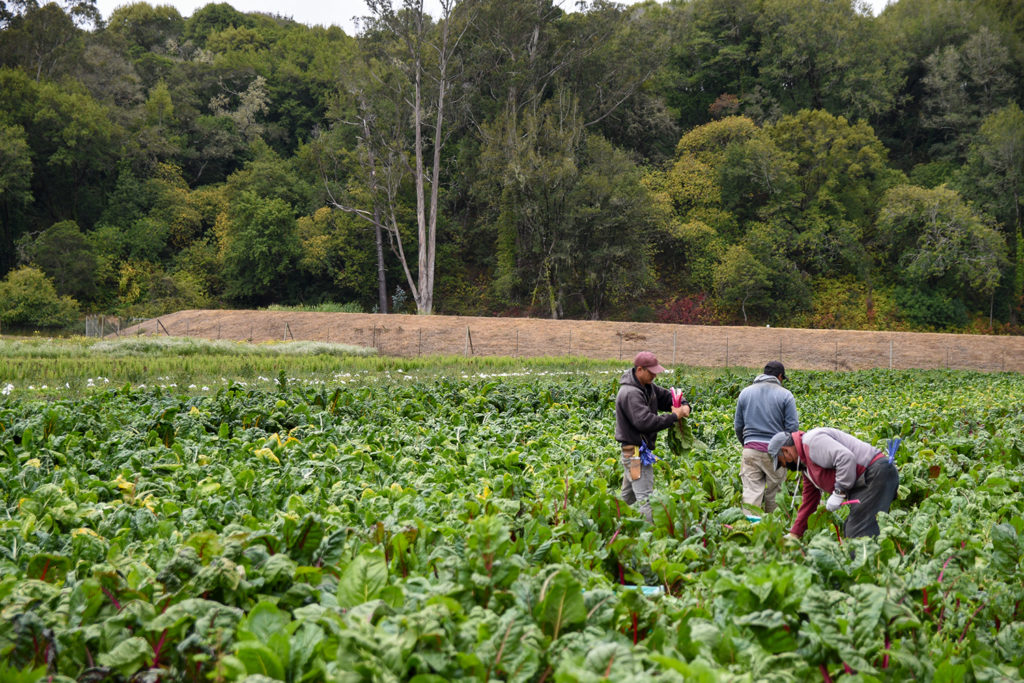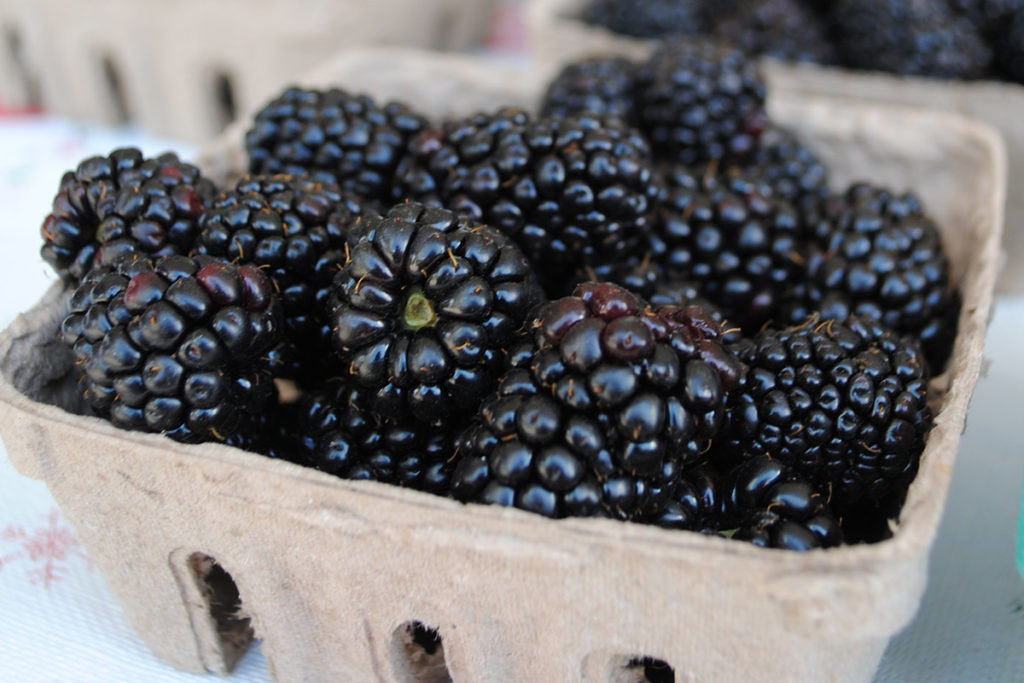California Farming Regions: The Central Coast and Southern California
October 28, 2005

California’s agriculture is the most productive and varied in the U.S., owing to the climate, topography, complex systems of water delivery, and diverse population of growers and consumers in this state. At the Ferry Plaza Farmers Market, we enjoy products from almost all of California’s production regions because of our central location and the population concentration in the Bay Area. In the coming weeks, the Foodwise (formerly CUESA) E-letter will feature a four-part series about the food-producing areas from which the cornucopia of goods sold at the market are drawn. The regions we’ve described are not the typical groupings, but serve well for our purposes. This week we focus on the bounty of the Central Coast and Southern California.
The Central Coast and Southern California
Along the central western border of California stand a series of mountains that separate the coast from the interior of the state. Known as the Coast Ranges, they were created by seafloor folding from the lateral movement of the North American and Pacific plates (along the San Andreas Fault) and their existence dramatically affects the soil, climate and thus agricultural potential in this region.
At the western base of the Coast Ranges, and on the floors of the valleys between them, is rich, deep, and characteristically fertile alluvial soil. The maritime climate and resulting fog (held in by the mountains) keep the summers cool and winters warm – a key factor in the diverse and prolific agricultural production that occurs there. Coastal temperatures are fairly consistent, and can support year-round production of many row crops. Most of the farms that come to the Ferry Plaza Farmers Market from this area use well water supplied on site or have runoff catchment and storage systems, and a few get water from local irrigation districts.
From the late 1700s until the mid-1800s, grazing cattle were the only source of agricultural food production in the upper part of the Central Coast (from which most of our coastal farmers come). The first significant crop in the region was potatoes, the main consumers of which were nearby gold miners. Potatoes were farmed in the region until the 1853, when a glut of the tubers led a good deal of the land to be planted with wheat, the excesses of which could be exported to South America and China. A drought and then flood in the 1860s caused the death of most of the cattle in the Salinas Valley, and more land was planted with wheat, which remained the predominant crop through the 1880s. When farmers began to experiment with what could be grown in the area’s soils, they quickly learned that the limits were few, and regional agriculture diversified as farmers planted tree fruits, row crops, and berries. In the 1890s, the cultivation of sugar beets began and the area soon housed the largest sugar beet processing plant in the world. Lettuce cultivation in what is now known as the “Salad Bowl” of the world, began right before World War I but didn’t take off until after the war. Lettuce was not deemed a priority crop by the U.S. government, which encouraged farmers to grow crops like beans and sugar that would endure export to soldiers abroad.

Much of the land once devoted to orchard fruits, wheat, and sugar beets has now been planted with more lucrative crops with longer harvest seasons, or developed for urban uses. The products that come to the Ferry Plaza Farmers Market from the Central Coast are characteristic of what is produced in the area today – an abundance of strawberries and bush berries, vegetables, and cut flowers, and a sprinkling of apples. High humidity along the coast is also great for mushroom cultivation.
The few farmers that come to the market from more southern portions of our state add much diversity to the offerings here. The warmer semi-desert of Southern California supports the cultivation of subtropical fruits that cannot withstand temperatures below the high 20s. From this region we enjoy fruits including cherimoyas, guavas, many varieties of avocado, dates, sapotes, delicious citrus and a wide range of vegetables.
Check out our interactive farm map to see farms that come to the Ferry Plaza Farmers Market from the Central Coast – San Mateo, Santa Cruz, Monterey, San Benito, and Santa Clara Counties – and Southern California – Santa Barbara, Ventura, and Riverside Counties.
Special thanks to the Agricultural History Project in Watsonville for their help with this article.
